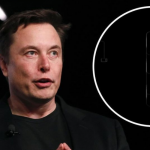It’s no secret that technology is advancing at an extremely fast pace. Just think about it: No one knew that we would have electric cars or the ability to travel in space as a luxury. Technology has not only made room for innovation in the field of transport but has taken over medicinal science, education, and even businesses. Don’t believe it? Over the recent years, there has been a complete change in how people live their lives, mainly because of the COVID-19 pandemic, which shaped each aspect of our daily lives, from working and going to school to the kind of entertainment that is now preferred. Another aspect that was affected by the pandemic was shopping—whether it was for groceries, fashion, or anything else.

Karolina/Pexels | This led to an increase in direct-to-customer brands that now benefit from technological advancement.
Pandemic Gave Rise To Online Shopping
Whenever you think of going to the store to buy something, the first thought that comes to your mind is, “Why don’t I just order it online?” and you hop on the computer to compare prices to find the best deals. This is the impact COVID-19 Pandemic has had, and because of this, there has been a significant increase in online shoppers. Another factor that comes into play is the content-consumption, which has also increased in these past three years. Now with a simple method like cash on delivery, you can order your product without the hassle of getting out of your comfort zone.

Andrea/Pexels | But, where do the Direct-to-customer brands come in?
What Are Direct-To-Customer Brands All About?
Before you jump into the details, you should know what direct-to-customer (D2C) brands are all about. This retail model is based on brands that directly sell to their clients. It does not require a wholesale middleman or the need to join with big retail brands or brick-and-mortar stores. Think about those small Instagram shops where they sell homemade lip balms or clay earnings. These brands have made quite their place in the market. In India, they are valued at $33.1 billion in 2021 and are expected to grow a whole lot more in the coming years. One of the leading sectors in the D2C brands happens to be beauty and skin care-related brands, which hold the highest e-commerce order volume this year.
Here’s How Technology Is Helping This Sector Grow:
1. Customer Communication
With the help of trend-locking tools, analysis, and insights, business owners get a clear picture of what their customers love and what they want to see. It also helps them maintain their brand identity while easily communicating with their customers.
2. Supply Chain Integration
Tools like OMS (order management system) and WMS (warehouse management software) allow the client to stay updated with the order progress. It supports the brand’s reputation and maintains its credibility.
3. Smooth Checkout Systems
Easy and simple checkout systems not only help the customers but also business owners, allowing them to detect any signs of fraud, analysis of the order volume, location, and more.

Andrea/Pexels | DTC brands often provide a more reliable experience
It’s so interesting how lives are changing around us at an extremely fast pace.







